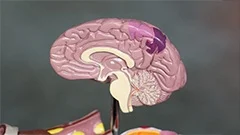Introduction
The focus of this comprehensive academic course is to delve into the intricate process of differentiation of lymphocytes, specifically in the context of the Olfactory Lymphatic Organs (OL1). This topic falls under the broader category of Immunology, providing students with a profound understanding of the immune system and its functions.
Anatomy and Function of Olfactory Lymphatic Organs (OL1)
The OL1, located within the nasal cavity, play a crucial role in immune surveillance for the respiratory tract. They are part of the mucosal-associated lymphoid tissue (MALT). Understanding their structure and function is essential for grasping the differentiation process of lymphocytes that occurs within them.
Structure of OL1
The OL1 are composed of:
- Lymphatic sinuses, which are interconnected networks of lymphoid tissue
- Intraepithelial lymphocytes (IELs), located in the epithelium lining the nasal cavity
- Lymphoid follicles, clusters of lymphocytes found throughout the OL1
Function of OL1
The primary function of the OL1 is to combat antigens that enter the body via the respiratory tract. They achieve this by:
- Filtering and sampling inhaled particles for potential pathogens
- Initiating adaptive immune responses through the activation of lymphocytes
- Serving as a site for B cell differentiation, isotype switching, and antibody production
Lymphocyte Differentiation in OL1
Lymphocyte differentiation within the OL1 follows a specific sequence involving multiple stages:
Precursor Lymphocytes
Precursor lymphocytes are immature cells that originate from bone marrow and migrate to the secondary lymphoid organs, including the OL1. They undergo differentiation and maturation into either T or B lymphocytes.
T Lymphocyte Differentiation in OL1
In the OL1, T lymphocytes mature into either helper T cells (Th cells) or cytotoxic T cells (Tc cells). This process involves antigen recognition and subsequent signaling events that result in T cell activation.
B Lymphocyte Differentiation in OL1
B lymphocytes undergo differentiation within the OL1 to produce antibody-secreting plasma cells, which play a crucial role in humoral immunity. The process of B cell differentiation includes:
- Antigen recognition and activation in the presence of antigens
- Isotype switching, where the class of antibody produced is altered in response to cytokines
- Maturation into plasma cells and production of antibodies specific to the encountered antigen
Regulation of Lymphocyte Differentiation in OL1
The differentiation of lymphocytes within the OL1 is regulated by a complex interplay of factors, including:
- Cytokines, which play essential roles in cell signaling and growth regulation
- Toll-like receptors (TLRs), pattern recognition receptors that trigger immune responses upon encountering specific pathogen-associated molecular patterns
- Antigens, the primary drivers of adaptive immune responses
Conclusion
This academic course provides a comprehensive understanding of the differentiation of lymphocytes within the Olfactory Lymphatic Organs (OL1). By exploring their structure, function, and the complex processes involved in lymphocyte differentiation, students will gain valuable insights into the intricacies of the immune system and its role in maintaining health and defending against pathogens.
MCQ: Test your knowledge!
Do you think you know everything about this course? Don't fall into the traps, train with MCQs! eBiologie has hundreds of questions to help you master this subject.
These courses might interest you
Create a free account to receive courses, MCQs, and advice to succeed in your studies!
eBiologie offers several eBooks containing MCQ series (5 booklets available free for each subscriber).



